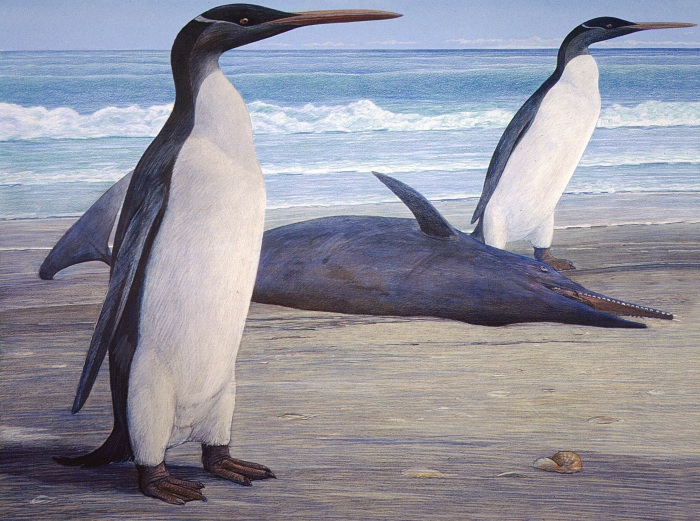Science News
Prehistoric Penguin
February 29, 2012

A mystery that began in 1977 ended recently with the description of a giant prehistoric penguin in the Journal of Vertebrate Paleontology.
An international team of researchers, led by Dan Ksepka of North Carolina State University, compared fossils discovered in New Zealand in 1977 with more recent finds, and then used the skeleton of an existing king penguin as a model to reconstruct the 25 million year-old penguin. The result is a tall bird with an elongated beak and long flippers—easily the largest of the five species that were common to the area in that time period.
“Kairuku was an elegant bird by penguin standards, with a slender body and long flippers, but short, thick legs and feet,” says Ksepka. “If we had done a reconstruction by extrapolating from the length of its flippers, it would have stood over 6 feet tall. In reality, Kairuku was around 4-feet-2 inches tall or so.”
By comparison, today’s tallest living penguin, the Emperor penguin, is about a foot shorter.
The fossil intrigued Ksepka because its body shape differs from any previously known penguin, living or extinct. In fact, Kairuku has no living descendants.
Apparently, New Zealand offered an incredibly diverse environment for these prehistoric penguins. According to Ksepka, “The location was great for penguins in terms of both food and safety. Most of New Zealand was underwater at that time, leaving isolated, rocky land masses that kept the penguins safe from potential predators and provided them with a plentiful food supply.
“This species gives us a more complete picture of these giant penguins generally, and may help us to determine how great their range was during the Oligocene period.”
Image: Chris Gaskin, Geology Museum, University of Otago